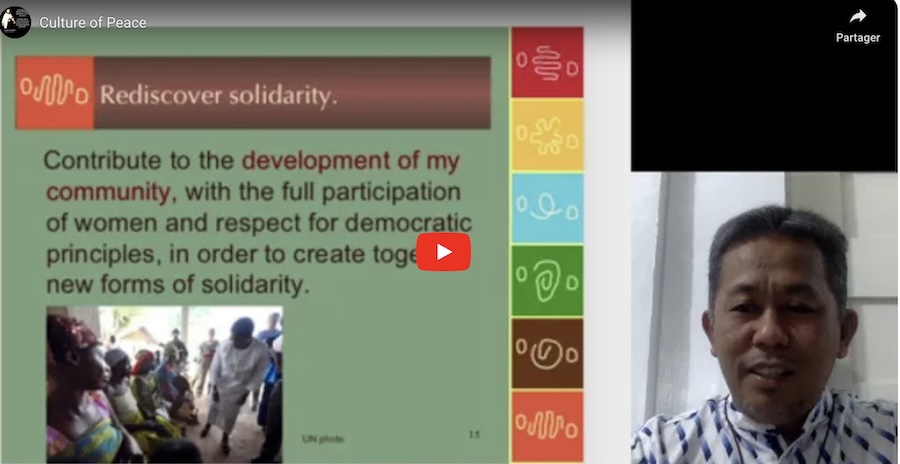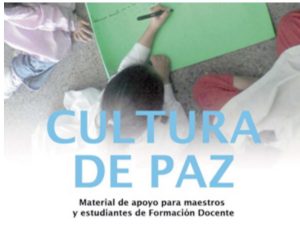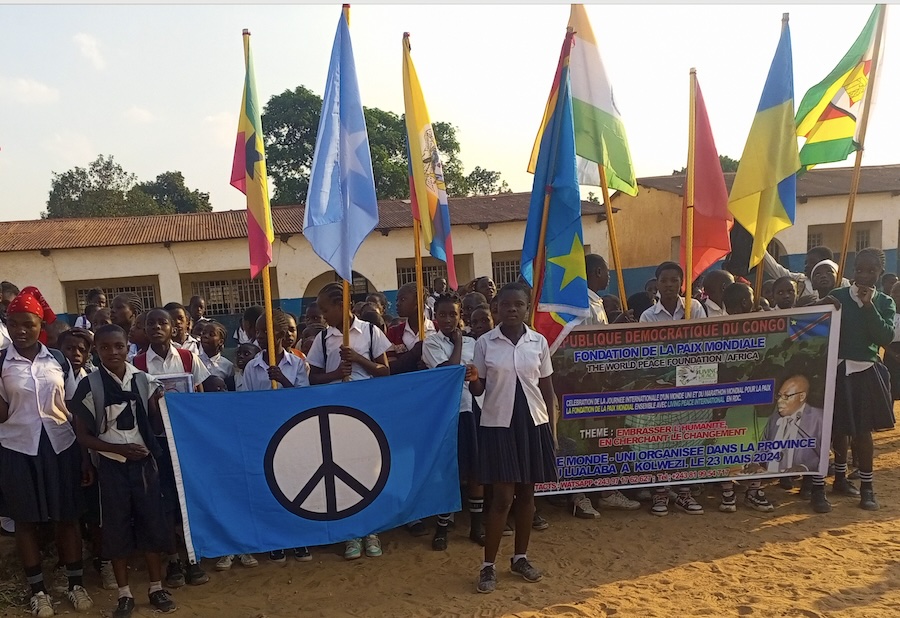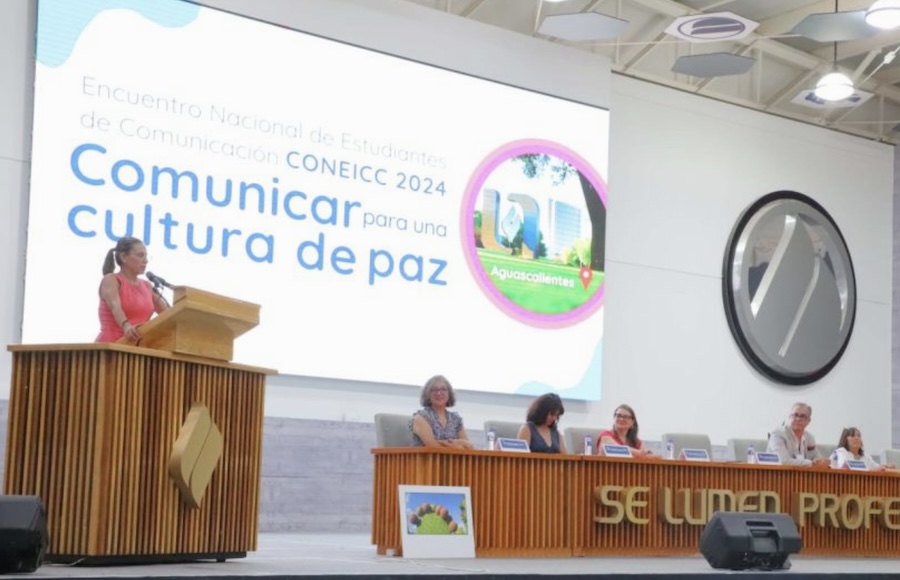… EDUCATION FOR PEACE …
An announcement from Alexandria University
Yesterday (May 15), the recommendations of the international conference entitled “The Role of Universities in Building Bridges of Understanding and Peace between the East and the West,” were announced.
The conference is organized by Alexandria University, the Association of Islamic Universities, Bibliotheca Alexandrina, and Al-Alamein International University. Participants included a large number of symbols of the academic and cultural community, ambassadors and consuls of Arab countries, members of the House of Representatives and Senate, vice presidents of the university, as well as deans, vice deans, and students of various faculties.
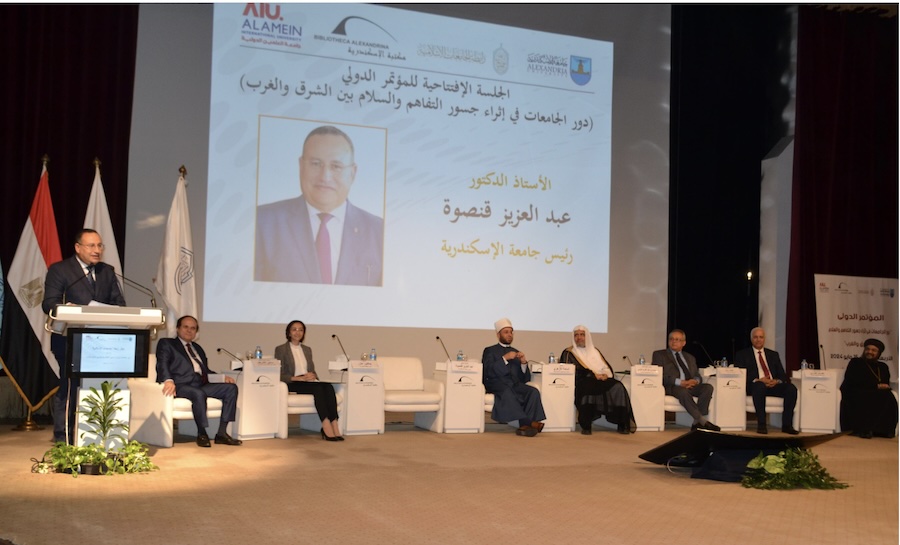
Dr. Sami El-Sherif, Secretary-General of the Association of Islamic Universities, indicated that the conference’s recommendations included emphasizing that dialogue and understanding are the only way to sustain life on planet Earth, and the necessity of attention and hard work in order to spread the culture of dialogue, and recognition of the other’s right to human brotherhood, and the emphasis on spreading the culture of peace and coexistence. among all human beings, consolidating the ideals of peace and coexistence among various countries and peoples, providing protection and intellectual fortification for young people against all attempts of false awareness and brainwashing, for the benefit of regional and international powers seeking to control the nation’s youth, and calling on international institutions and organizations to carry out their duties in supporting aspects of truth, justice, equality and achieving the interests of the international community in general, and the need for universities to assume their responsibilities to develop a comprehensive strategy to confront extremism and terrorism, and expand the circle of confrontation to include besieging extremist individuals, groups and countries and preventing them from spreading their destructive ideas.
He added that the recommendations included emphasizing the role of universities in supporting research projects and scientific papers in multiple languages and publishing this output through scientific institutions and major international publishing houses, and the need to support all universities and educational institutions to consolidate their academic and research relations with international universities with the aim of cooperating in the field of combating terrorism and extremist ideology, and working to spread enlightened thought, and focusing on highlighting international initiatives and the initiatives of civil society organizations calling for understanding and dialogue, calling on universities to enrich the translation movement for scientific and cultural production in foreign languages and paying attention to translating books, studies, scientific research and publications produced by specialized international universities of value into the Arabic language, also calling on universities to adopt new ideas and innovations that would enrich dialogue and deepen cultural and human communication, and paying attention to developing scholarship programs for university employees to benefit from the modern technical, scientific and academic developments of highly-ranked international universities.
Participants in “Role of Universities in Building Bridges of Understanding and Peace between East and West” International Conference Emphasize Universities’ Role in Building Bridges and Enriching Youth Awareness
Created: 15 May 2024
Under the title “The Role of Universities in Supporting Dialogue and Understanding,” the activities of the first session of the International Conference “The Role of Universities in Building Bridges of Understanding and Peace between the East and the West” were held today, organized by Alexandria University, the Association of Islamic Universities, Bibliotheca Alexandrinq, and Al-Alamein International University, in the presence of a large number of prominent figures from the academic and cultural communities, ambassadors and consuls of Arab countries, members of the House of Representatives and Senate, vice presidents of the university, deans, vice deans and students of various faculties.
The session was chaired by Professor Dr. Abdelaziz Konsowa, President of Alexandria University, with the participation of Dr. Mofid Shehab, former Minister of Higher Education. In his speech, Dr. Shehab pointed out the importance of the conference, which highlights how to help societies achieve peaceful coexistence, and the role of universities in Islamic countries in supporting dialogue between the East and the West, by participating in building dialogue channels and setting rules for this dialogue to ensure its continuity and that its programs are practical and applicable.
Ambassador Nabila Makram, former Minister of State for Egyptians Abroad Affairs, pointed out the importance of the role of universities in enriching youth awareness and developing their abilities for dialogue, stressing the importance of preserving the mental health of young people who suffer from many challenges such as alienation and bullying. She praised the role played by psychological support units in faculties in helping students and opening prospects for dialogue to confront isolationism and extremism.
Dr. Mohamed Sami Abdelsadek, Vice President of Cairo University for Community Service and Environmental Development Affairs, pointed out that Cairo University is making great efforts to support dialogue as a lofty cultural value through joint academic degrees and bringing in foreign professors from various specializations. He stressed the need to focus on the critical thinking course for various students, dialogue activities between Egyptian and international students, and the Office for Promoting National and Heritage Identity.
Dr. Roshdi Zahran, Chairman of the Board of Trustees of Al-Alamein International University, explained the role of universities in building bridges of understanding and peace in light of a world full of wars and conflicts, where universities work in addition to their academic role as cultural, intellectual, knowledge and creative centres through curricula, scientific programs, joint scientific research and various cultural activities to enhance the concept of dialogue, understanding and tolerance.
The session witnessed recorded interventions by Dr. Abdelhak Azouzi, Chairman of the Alliance of Civilizations in Morocco, and Dr. Abdelaziz Barghouth, President of the International Institute for Islamic Civilization and Thought and Vice President of the International Islamic University in Malaysia, to clarify the importance of the role of universities in spreading the values of peace, coexistence and dialogue among young people.
The second session was held under the chairmanship of Dr. Essam El-Kurdi, President of Al-Alamein International University, while participants included Dr. Abdelhay Azab, former President of Al-Azhar University, Dr. Fathi Abu-Ayana, former President of Beirut Arab University, and Dr. Hussein Amin, Director of the “Kamal Adham” Center at the American University, also participated from abroad Dr. Abdulmajid bin Abdullah Al-Benyan, President of Naif Arab University for Security Sciences, where they talked about the role of universities in promoting human values, and the main human values that universities must promote to spread the goals of dialogue and tolerance among university students, the role of Alexandria University in spreading the culture of tolerance, and the role of universities in creating the appropriate environment to enrich dialogue and understanding between different peoples and civilizations.
(This article is continued in the column on the right.)
Question for this article:
What is the relation between peace and education?
(Article continued from left column)
Inauguration of International Conference on “Role of Universities in Enriching Bridges of Understanding and Peace between East and West”
Professor Dr. Abdelaziz Konsowa, President of Alexandria University, His Excellency Sheikh Mohamed bin Abdel Karim Al-Issa, President of the Association of Islamic Universities, Dr. Ahmed Zayed, Director of Bibliotheca Alexandrina , and Dr. Essam El-Kurdi, President of Al-Alamein International University, inaugurated today, Wednesday 15 May 2024, the activities of the International Conference of the Association of Islamic Universities, which was held under the title “The Role of Universities in Enriching Bridges of Understanding and Peace between the East,” in the presence of Dr. Osama El-Azhari, Advisor to the President of the Republic for Religious Affairs, Dr. Jacqueline Azer, Deputy Governor of Alexandria, Dr. Sami El-Sherif, Secretary-General of the Association ofIslamic Universities, and Bishop Bavli, the General Bishop of the Montaza and Alexandria Youth Churches, in addition to former presidents and vice presidents of the University, deans and vice deans of faculties and institutes of Alexandria University, a group of ambassadors and consuls of Arab countries, members of the House of Representatives and Senate, and university students.
In his speech, Dr. Konsowa stressed that universities in the East and the West are keen to play their role in building bridges of cooperation and dialogue, which are the two elements on which all positive relations between people are based, despite their differences. He pointed out that the means of dialogue and understanding lie in listening well to the other, expressing clearly, accepting the other, respecting different thought and avoiding bias, which are all pillars of dialogue that bring us together to reach humanity’s desired goal of achieving the dream of peace.
He added that universities have an essential role in achieving this highest goal, as they work to provide an environment for dialogue and platforms for open discussion that enhance social cultural diversity, and encourage understanding and tolerance in their programs, as well as encouraging scientific research that addresses the issues of different cultures and how to coexist with them, in addition to providing cultural exchange programs and the exchange of students and professors to enhance mutual understanding through their exposure to different languages, cultures, and viewpoints.
In this regard, Konsowa stressed that the university has established cross-disciplinary programs that focus on the relations between the East and the West and cover all scientific fields, to give students and researchers insights that enable them to recognize the differences between cultures, as well as creating language education programs that expand to include the languages of the East and the West, and the different cultures, values and customs that the languages carry. He added that the university also organizes conferences, seminars, exhibitions, and public lectures displaying the richness and diversity of other cultures. Konsowa pointed out that Alexandria University established the University of Beirut in 1960, and in 1972 it established the Centre for Graduate Studies and Research in cooperation with UNESCO and the United Nations Development Programme. In 1985, the university established a centre for teaching Arabic to non-native speakers, and in 2010 the university established a branch in the Chadian capital, Ndjamena, as the first branch of an Egyptian university in the African region. In the same year the establishment of a branch of Alexandria University in the city of Tonj in South Sudan began, and another branch is being established in Juba, the capital of South Sudan. All this comes within the framework of the Egyptian state’s keenness, represented by Alexandria University, to extend bridges of cooperation with brothers on the African continent and the Nile Basin countries. At the end of his speech, the University President saluted the Palestinian people and the people of Gaza who are steadfast in the face of the brutal Israeli aggression.
His Excellency Sheikh Mohamed bin Abdul Karim Al-Issa stressed the importance of the conference, which is an important start for strengthening cultural and civilizational construction through building bridges of understanding between different cultures and not abstract dialogue, so that the conference produces tangible valuable results. He pointed out that the world witnessed unfortunate debates and theories about the clash between the East and the West, pointing to the initiative that he presented to the Secretary-General of the United Nations in New York to reduce the gaps between the East and the West by organizing a conference for this purpose, which was greatly welcomed. His Excellency Sheikh Al-Issa added that the message of the Association is love and peace through effective initiatives and mobilizing the aspirations of universities in our Arab and Islamic world to move forward, providing solid, rational thought, not randomness, and playing their role in enhancing awareness through school curricula. He also pointed to the role of the family and educational institutions, starting with the school and then the university, and the influence of religion, so that they all do their part to enhance cultural construction. He also pointed to the Medina Document as the first document to consolidate the values of human brotherhood, peaceful and societal coexistence.
While Dr. Ahmed Zayed expressed his thanks and gratitude for choosing Bibliotheca Alexandrina to hold this important conference, which includes a huge crowd of thinkers and creators in the Arab world, pointing to the changes, wars and woes the world is witnessing, hence the urgent need to hold intellectual forums organized by universities, for their role in spreading understanding and cooperation between the East and the West, instilling understanding through universities, providing scientific research to monitor the successes and failures of the world, and developing school curricula so that young people can build a new world that is richer and more peaceful, learning about human issues away from extremism. At the end of his speech, Zayed stressed that Bibliotheca Alexandrina will organize the “Bibliotheca Alexandrina Forum for International Peace and Tolerance,” which will be held annually in order for the Alexandria Library to present a message to the world which contains the Egyptian point of view on understanding and coexistence among peoples and acceptance of others.
While Dr. Essam El-Kurdi confirmed that this conference is being held based on the initiative launched by His Excellency Sheikh Dr. Mohamed bin Abdul Karim Al-Issa, President of the Association of Islamic Universities and Secretary-General of the Muslim World League, from the United Nations platform, entitled Building Bridges of Understanding and Peace between the East and the West. He stressed that today’s sessions discuss the role of universities to enrich building the bridges of understanding and peace between the East and the West, which is an important issue in international relations and international cooperation. He pointed out that the East and the West represent multiple and different geographical and cultural regions and share many common issues and challenges facing them in general. He stressed that universities play an important role in promoting understanding and cooperation between different cultures, as they are the place where young people from different social, cultural and religious backgrounds meet, and through these educational programs, student activities and scientific research, universities are adopting new ideas and innovations to enhance mutual understanding and respect between students from the East and the West, where students live in a multicultural environment, which contributes to increasing awareness and tolerance among them, in addition to the role of universities in providing protection and intellectual fortification for young people against all attempts to falsify awareness, and helping them build global networks for cooperation.
Dr. Sami El-Sherif, Secretary of the Association of Islamic Universities, pointed out that disagreement is a universal norm, and there must be communication between civilizations, and all institutions of society are required to play their role, especially universities, as they are among the largest institutions entrusted with building the character of students and training them in the etiquette of dialogue and the culture of difference. He added that the Association is working on integration and coordination among all its members, with the aim to develop programs and contribute to finding solutions to the problems facing the Islamic world by upholding the values of brotherhood, tolerance and peace among people.
While Dr. Jacqueline Azar pointed out the importance of the conference, especially since the world today is witnessing a continuous increase in cultural diversity, and this diversity is an opportunity for learning and understanding. She stressed that universities play an important role in achieving cooperation and understanding and spreading the culture of coexistence and understanding among individuals, adding that the topic of this conference is consistent with the vision of the Egyptian state, led by President Abdel Fattah El-Sisi, stressing the necessity of coexistence and acceptance of others, and spreading a culture of peace to encourage learning about different cultures to enhance understanding and coexistence with others.
– – – – – –
If you wish to make a comment on this article, you may write to coordinator@cpnn-world.org with the title “Comment on (name of article)” and we will put your comment on line. Because of the flood of spam, we have discontinued the direct application of comments.
